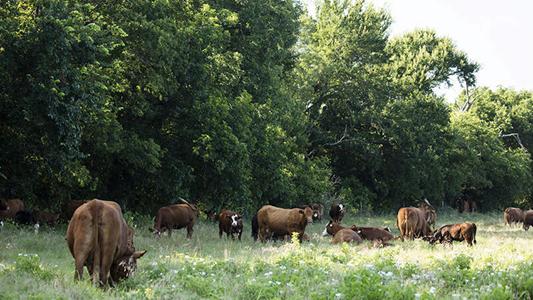
Much like the weather, fly populations can be a bit unpredictable during certain times of year. That's often been the case with horn flies on pasture cattle, as populations have been known to rise after heavy rainfall events. This has created some mild concerns as producers question whether their feed-through fly control products are working effectively. To learn more, we sent our team into the field to see the effect heavy rainfall has on Altosid® IGR.
Field Study Insights
After studying various regions across the country, our experts concluded that heavy rainfall can cause a brief spike in horn fly numbers among cattle treated with Altosid® IGR. However, within 1-2 weeks, all fly populations returned to their normal control levels. Chris Holderman, manager of product development at Central Life Sciences, provided additional insights:
"In some of our research studies, after heavy rainfall events, while feeding Altosid®, we see a delayed, one week or two weeks later, a small spike in horn flies. But in the long term, the product is still working; it just has a couple more flies than you would expect. And the research that we've done shows it's usually been below economic thresholds."
Treatment Tips for Producers
While this information alone can be comforting, we wanted to provide treatment tips to help producers plan for and address these population spikes. Following these recommendations can work as an insurance against rising fly populations after heavy rainfall events.
- Monitor Weather Forecasts: Keep an eye on your local weather forecast to better predict when to begin treatments each season.
- Address Population Spikes: If you're already feeding Altosid® IGR and notice fly populations exceeding the economic threshold after a rainfall event, knockdown adult fly populations with a spray like as Prolate/Lintox HD™ Insecticidal Spray and Backrubber from Starbar® Products. As Chris Holderman noted, "If you're feeding Altosid® and you notice flies a week after a rainfall event, and there's enough that you think it's worth treating, come in with a spray to knock them down, and continue to feed Altosid® and see what happens in another week. Those populations are going to drop back down to where we want them."
- Continue Feeding Altosid® IGR: The product continues to provide effective horn fly control and should limit populations to expected levels within a few weeks of the rain. Holderman emphasizes the importance of consistency stating, "Feed it all the way through the season and then 30 days after the first frost. This controls the horn fly population throughout the season. If you stop too early in the fall, those flies will lay eggs that develop into pupae, overwinter, and emerge as adults in the spring."
Altosid® IGR delivers effective horn fly control that producers have relied upon for nearly 50 years. While heavy rainfall may produce a brief uptick in horn fly numbers, producers that weather the storm and continue feeding Altosid® IGR can help keep their cattle healthy and profitable all season long.



